Breast Lift in Cambodia
Search and Compare the Best Clinics and Doctors at the Lowest Prices for Breast Lift in Cambodia

Find the best clinics for Breast Lift in Cambodia
No clinics available
Czech Republic offers the best prices Worldwide
Price: $ 85

- Home
- Cambodia
Compare Before & After Photos of _procedure_photos.phpBreast Lift
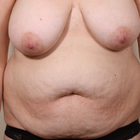
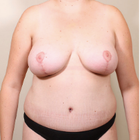
Front view
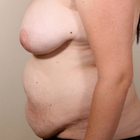

Full-side view

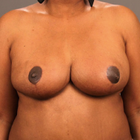
Front view
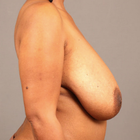
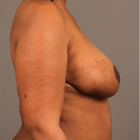
Full-side view
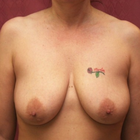
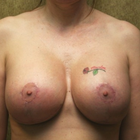
Front view
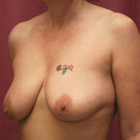

Half-side view
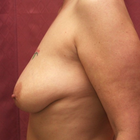
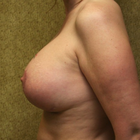
Full-side view
WHY US?
At Medijump, we're making medical easy. You can search, compare, discuss, and book your medical all in one place. We open the door to the best medical providers worldwide, saving you time and energy along the way, and it's all for FREE, no hidden fees, and no price markups guaranteed. So what are you waiting for?

Free

Best Price

Widest Selection

Risk-Free
What you need to know about Breast Lift in Cambodia
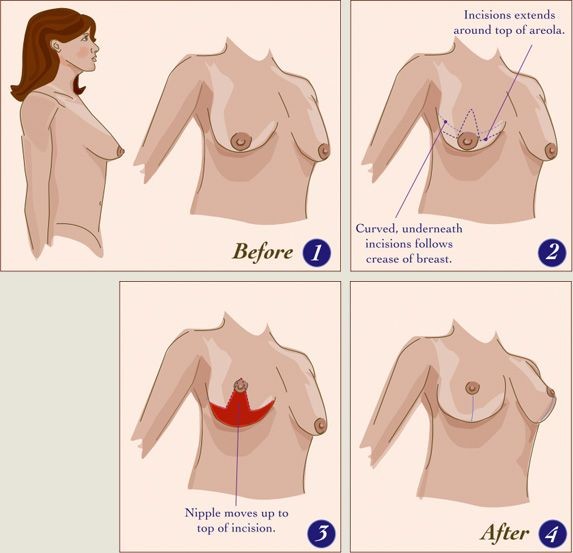
Commonly known as a Mastopexy, the breast lift is a surgical procedure to raise sagging breasts by modifying the contour and elevation. Breasts look saggy due to overstretched suspensory ligaments of cooper, excessive tissue, and skin. Lactation is also a cause of drooping breasts. During this procedure, a plastic surgeon removes excess skin and tighten the remaining tissue to create a more contoured and shapely breasts. Some patients may choose to have breast implants added as part of the procedure to give the breasts more volume.
After the surgery, you can expect to have round and elevated breasts. However, this surgery is not for everyone, you should talk to your doctor openly before opting for it. Your physical conditions and history are considered before going for surgery. Your surgeon will determine whether or not you are a good candidate for breast lift. For patients over the age of 40, a breast scan might be necessary.
A breast lift won't significantly change the size of your breasts. However, it can be performed in combination with breast augmentation or breast reduction.
What is the cost of Breast Lift in Cambodia?
Due to a number of variables, including the complexity of the surgery, the surgeon's experience, and the location of the medical centre, the cost of the Breast Lift within Cambodia may vary greatly. Typically, the anticipated cost might be hundreds of dollars.
However, it is important to emphasise that the cost should not come at the expense of the quality of healthcare, particularly when it comes to surgical procedures. For the greatest outcomes, it is advised to work with a reputed medical facility and communicate with a skilled surgeon.
What does a Breast Lift Procedure Involve?
A number of techniques are available for a breast lift. They differ in the location of incisions. The one suitable for you is chosen according to the condition of your breasts. The procedure begins with making you lay in the supine position. You are anesthetized, so that you may not suffer from pain during the surgery. After this, an incision is given around your areola descending down towards the crease where it runs horizontally. Stitches are given inside the breasts to suspend them. Excess tissue is removed. Sometimes, the size of your areola is decreased and nipples are shifted to a higher position. In most cases, the nipple-areola complex (NAC) is preserved to prevent damage to your lactational ability. After your surgeon removes exess skin, tissue, and fat, they put back the skin flap to its place and stitch the incision.
After the surgery, a bandage is applied over the operated area. You are then given a surgical bra to wear. Small tubes are placed near your incisions to drain any fluid or blood. These tubes are removed after several days.
How Long Should I Stay in Cambodia for a Breast Lift Procedure?
Breast lift is a 2 to 3-hour procedure, after which you are moved from the operation theatre to a private recovery room. You are monitored for a few hours, and if everything goes fine you can go home on the same day, assuming no other surgeries were performed at the same time.
After being discharged from the hospital, you have to come for check-ups on a regular basis to ensure that nothing goes wrong. You should remain in Cambodia for at least 7-10 days after the surgery. In this period, your incisions heal and stitches are removed. You can leave when told by your doctor.
What's the Recovery Time for Breast Lift Procedures in Cambodia?
Plan to take 2 to 3 weeks off work for your breast lift surgery. There will be pain and swelling in the operated area and your breasts will appear swollen for almost 2 weeks. There will be redness and pain around your incisions. Your areola and nipple are likely to be numb for a few days.
In the early days, painkillers are given to help you with pain. You might have to wear surgical bras for 2 to 3 weeks, after which, you can wear regular bras. No underwire bras should be worn for at least 6 weeks.
What sort of Aftercare is Required for Breast Lift Procedures in Cambodia?
Following points should be kept in mind to take care of yourself after being discharged from the hospital:
- Visit your doctor regularly for some time.
- Take your medicines as and when prescribed by the doctor.
- Follow a healthy diet plan for a better recovery.
- Ensure the presence of someone with you to look after you.
- Do not wear push up bras for 5 to 6 weeks after the surgery.
- Wear surgical bras in the early few days.
- Avoid excessive movement of your breasts.
- Do not take a bath as long as bandages are there. Wet bandages can be the cause of infection.
- Do not bend.
- Avoid sexual activity for at least 2 weeks.
- Do not lift heavy objects or kids. It can put stress on your stitches, removing them before due time.
What's the Success Rate of Breast Lift Procedures in Cambodia?
According to a survey, 80% of women are satisfied by breast lift surgery. Their bust is restored, and sagginess disappeared. Most people experience long-lasting results, while others might need minor revisions after a few years.
For an in-depth analysis of the Breast Lift procedure with before and after images, watch this short video.
Are there Alternatives to Breast Lift Procedures in Cambodia?
The following are some non-surgical alternatives to breast lift surgery:
- Padded bras: padded bras or push up bras give a rounded contour to your breasts without incisions. Bras lift your breasts up eliminating the droopy appearance. However, this is not a permanent method.
- Vampire breast lift: in this procedure, platelet-rich plasma (PRP) injections are given which restore your bust. This is a 20-minute procedure in which a numbing cream is applied onto your breasts. After they go numb, PRP along with hyaluronic acid is injected into your breasts. It tightens your breasts and lifts them up. Hyaluronic acid increases the efficacy of PRP.
- Laser treatment: high power laser is used to stimulate the growth of collagen. It only targets the outer layers of skin. Hence, rejuvenating the skin only.
- Caci bust treatment: a device releasing electrical impulses is moved over your breasts. It hydrates your skin and gives strength to the tissue. Improving the contour of your breasts.
- Botox: These injections are given into your chest muscles. As a result, these muscles relax. To compensate for these muscles, your back muscles contract, lifting your breasts higher. This can last for 3 to 4 months.
- Thermage: in this procedure, radio waves are used to tighten the skin of your bust. Production of collagen is stimulated which lifts the skin of your droopy breasts.
- Chest exercises: you can do different chest exercises to strengthen your chest muscles. It tightens the skin and raises your breasts. It is more effective if performed under the supervision of an instructor.
What Should You Expect Before and After the Procedure
The preliminary phase before the Breast Lift generally requires an exhaustive health evaluation, which includes a mammogram and the measurement of your breasts. The medical facility will recommend you to avoid drugs that could escalate the risk of bleeding, for instance, Aspirin. They may also request that you refrain from smoking since nicotine can hinder the recovery process.
Post Breast Lift, you are likely to be required to wear a healing bandage or post-surgical bra to reduce swelling and provide support to your breasts during the healing phase. It is possible that a slender tube may be inserted to eliminate any surplus blood or fluid. Normal post-procedure discomforts include pain, bruises, and swelling that can be effectively handled with prescribed pain medication. The medical facilities will issue comprehensive instructions regarding wound maintenance, medicine, and consequent appointments. Participating in arduous activities is advised against for approximately six weeks after the surgery.
Do note that personal experiences with the Breast Lift can vary slightly. The duration of the healing process and the ultimate outcome heavily rely on personal health conditions, lifestyle practices, and compliance with instructions after the operation.
What are Potential Risks of Breast Lift?
There are, however, risks and side effects you need to be aware of. Some of these risks include:
- Infection
- Bleeding
- Scarring
In rare cases, the surgery might not be successful. Failed surgeries leave marks on your breasts which can be subjected to hypertrophy. Also, there might be a difference in the shape of both breasts. In these cases, revisional breast lift surgery is performed
Whilst the information presented here has been accurately sourced and verified by a medical professional for its accuracy, it is still advised to consult with your doctor before pursuing a medical treatment at one of the listed medical providers
No Time?
Tell us what you're looking for and we'll reachout to the top clinics all at once
Enquire Now

Popular Procedures in Cambodia
Prices Start From $208

Prices Start From $89

Prices Start From $931

Prices Start From $76

Recommended Medical Centers in Cambodia for procedures similar to Breast Lift

- Interpreter services
- Translation service
- Religious facilities
- Medical records transfer
- Medical travel insurance
- Health insurance coordination
- TV in the room
- Safe in the room
- Phone in the room
- Private rooms for patients available

- Interpreter services
- Translation service
- Religious facilities
- Medical records transfer
- Medical travel insurance
- Health insurance coordination
- TV in the room
- Safe in the room
- Phone in the room
- Private rooms for patients available

- Interpreter services
- Translation service
- Religious facilities
- Medical records transfer
- Medical travel insurance
- Health insurance coordination
- TV in the room
- Safe in the room
- Phone in the room
- Private rooms for patients available

- Interpreter services
- Translation service
- Religious facilities
- Medical records transfer
- Medical travel insurance
- Health insurance coordination
- TV in the room
- Safe in the room
- Phone in the room
- Private rooms for patients available

- Interpreter services
- Translation service
- Religious facilities
- Medical records transfer
- Medical travel insurance
- Health insurance coordination
- TV in the room
- Safe in the room
- Phone in the room
- Private rooms for patients available

- Interpreter services
- Translation service
- Religious facilities
- Medical records transfer
- Medical travel insurance
- Health insurance coordination
- TV in the room
- Safe in the room
- Phone in the room
- Private rooms for patients available

- Interpreter services
- Translation service
- Religious facilities
- Medical records transfer
- Medical travel insurance
- Health insurance coordination
- TV in the room
- Safe in the room
- Phone in the room
- Private rooms for patients available

- Interpreter services
- Translation service
- Religious facilities
- Medical records transfer
- Medical travel insurance
- Health insurance coordination
- TV in the room
- Safe in the room
- Phone in the room
- Private rooms for patients available
Breast Lift in and around Cambodia
Introduction
Perched in the heart of Southeast Asia, nestled between Thailand and Vietnam, lies Cambodia — a dynamic blend of ancient and contemporary worlds that makes for an intriguing adventure. Dominating its list of attractions is the globally-renowned Angkor Wat, embroidered by lush jungles.
It is the soul of Cambodia — its vibrant culture, warm inhabitants, profound historical heritage, stunning coastlines, delightful cuisine, and spirited nightlife — that gives this nation its unique charm. Each element, individually fascinating and collectively harmonious, weaves a magical tapestry that is Cambodia.
Over recent years, Cambodia has strategically bolstered its healthcare infrastructure, aiming to appeal to a global patient community. In this endeavor, the country has witnessed several of its hospitals forging partnerships with institutions from close-by countries, with Thailand being a significant partner.
These strategic alliances have been key in establishing state-of-the-art healthcare facilities across Cambodia. These healthcare establishments strive to cater to a diverse array of medical needs, ensuring the delivery of world-class, professional care that meets, if not surpasses, internationally accepted standards.
Cambodia is relentlessly driving efforts to enhance its healthcare sector, with one main goal - to give patients access to top-notch medical care at costs significantly lower than those in other Southeast Asian nations, Singapore being a prime example.
This strategic approach is geared towards attracting patients from regions like Laos, Taiwan, and China. The essence of this approach is to establish Cambodia as a major healthcare destination that offers high-quality medical services, all within a budget-friendly framework that doesn’t strain patients' finances.
Popular Cities and Regions in Cambodia
Phnom Penh is the capital of Cambodia, as well as the main medical tourism destination in the country. Once the ‘Pearl of Asia,’ this bustling city is now filled with bustling bars, historical architecture, vibrant café culture, a world-class food scene, and a glimmering Royal Palace.
Tourists venturing into Cambodia are invited to traverse the myriad attractions this enchanting nation has to offer. A must-visit is the National Museum of Cambodia which houses the country's extensive cultural history and art. For those who seek a deeper insight into Cambodia's past, the Tuol Sleng Genocide Museum provides a poignant yet important glimpse into the darker chapters of its history. In addition, the Royal Palace stands as a testament to Cambodia's architectural grandeur, drawing admiration from visitors across the globe. Another gem to explore in Phnom Penh is the Silver Pagoda, a unique blend of tranquility and exquisite craftsmanship, making for an unforgettable experience.
Moving beyond the capital city of Phnom Penh, Siem Reap emerges as another popular destination in the Cambodian travel circuit. This city, bustling with energy and soaked in history, captures the diverse ethos of Cambodia in its vibrant art, architecture, and local life. Inclusion of Siem Reap in any Cambodian itinerary lends an additional layer of cultural depth, making the exploration of this intriguing nation an even more enticing proposition. As such, whether it's diving into the past or experiencing the dynamic present, Cambodia offers a varied palette of experiences to delve into.
It’s where the fascinating, UNESCO-listed Angkor Wat is located. Aside from Angkor Wat, Siem Reap also offers other attractions, such as the Angkor Silk Farm, Wat Bo, War Museum, and Senteurs d’Angkor Botanic Garden. Those who want to relax on a beach should visit Sihanoukville. It was once a quiet beach town, but now it has become a modern up-and-coming holiday destination.
Transport in Cambodia
Phnom Penh International Airport stands as the largest and most bustling airport in Cambodia. Acting as a critical transportation nexus, it facilitates both domestic and international air travel. The airport offers numerous flight connections to various cities across Asia, making it a convenient choice for international tourists. Besides being a gateway into Cambodia, it also serves as a starting point for internal travel.
For tourists looking to cover various parts within the country swiftly, opting for domestic flights is a time-efficient choice. These flights are well-linked, providing easy access to different parts of this captivating country. Despite being the fastest mode of travel, they maintain reasonable fares, ensuring that the journey is equally enjoyable as the destination.
As one navigates within the cities, there is a disparity between the modes of transportation used for intra-city and inter-city travel. While trains and buses are the preferred options for traveling between different cities due to their affordability, city-based transportation adopts a different palette altogether. For daily city commutes and quick visits to local sights, taxis, tuk-tuks, and motorbikes are the most viable options. They're not only readily available but also allow for an intimate view of Cambodian city life. This dynamic and efficient transportation network significantly enhances the convenience of exploring Cambodia's stunning expanse.
Visas in Cambodia
- Citizens of 9 countries, including Laos and Singapore, can visit and stay in Cambodia for up to 30 days without a visa.
- Citizens of most other countries can apply for a visa on arrival or eVisa.
- All visitors must have a passport valid for at least six months beyond their intended date of departure from Cambodia.
Visa on arrival
- A visa on arrival can be obtained at any of the following Cambodian airports: Phnom Penh International Airport (PNH), Siem Reap International Airport (REP), and Sihanoukville International Airport (KOS).
- The visa on arrival fee is USD 30.
- Visitors who obtain a visa on arrival must have a valid passport and two passport-size photos.
eVisa
- An eVisa can be obtained online at the website of the Cambodian government.
- The eVisa fee is USD 35.
- Visitors who obtain an eVisa must have a valid passport and a digital photo.
Weather in Cambodia
Cambodia is blessed with a warm climate throughout the year, making it a destination for all seasons with temperatures seldom falling below 20°C. Cambodian weather is generally categorized into two primary seasons: wet and dry. The wet season, spanning from May to October, is marked by episodic showers during daytime hours, adding to the country's tropical charm.
The dry season, commencing from November and extending up to April, is typified by agreeable and sunny weather conditions, making it an ideal time for travel and exploration. However, it is worth noting that during the peak of the dry season, specifically in March, temperatures can climb up to a sweltering 35°C. Despite the somewhat extreme conditions, the resplendent beauty of the country remains undeterred, with Cambodia promising a riveting experience regardless of the season.
Additional Info
- Local Currency: Cambodian riel (KHR) is the official currency and 1 USD converts to approx. 4,161.63 KHR. However, USD is widely accepted.
- Money & Payments: ATMs are widely available and sometimes dispense US dollars. Credit cards are accepted in major cities. Tipping is expected and appreciated.
- Local Language: The official and mainly spoken language is Khmer. Some people also speak Vietnamese and Chinese. English is mostly used in tourist areas and major cities.
- Local Culture and Religion: About 97% of the population follows Theravada Buddhism. Islam, Christianity, and tribal animism make up the remaining 3%.
- Public Holidays: Victory over Genocide Day, Khmer New Year, King’s Birthday, Day of Remembrance, and Independence Day are some of the public holidays celebrated in Cambodia.
Popular Searches
- Plastic Surgery in Thailand
- Dental Implants in Thailand
- Hair Transplant in Thailand
- Breast Augmentation Thailand
- Gastric Sleeve in Thailand
- Gender Reassignment Surgery in Thailand
- Laser Hair Removal in Bangkok
- Botox in Bangkok
- Dermatology in Bangkok
- Breast Augmentation in Bangkok
- Coolsculpting in Bangkok
- Veneers in Turkey
- Hair Transplant in Turkey
- Rhinoplasty in Turkey
- Stem Cell Therapy in Mexico
- Rhinoplasty in Mexico
- Liposuction in Mexico
- Coolsculpting in Tijuana
- Rhinoplasty in Korea
- Scar Removal in Korea
- Gastric Sleeve in Turkey
- Bone Marrow Transplant in India
- Invisalign in Malaysia
- Plastic Surgery in the Dominican Republic
- Tummy Tuck in the Dominican Republic
- Plastic and Cosmetic Surgery in Poland
- Rhinoplasty in Poland
- Hair Implant in Poland
- Dental Implants in Poland
- IVF in Turkey